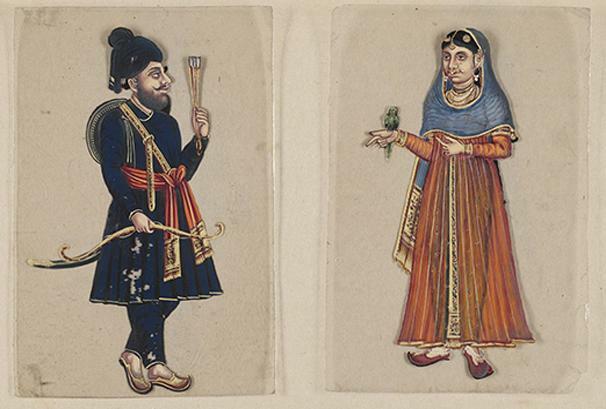Prehistory is the longest period in human history.
It began about 2,500,000 years ago and ended with the rise of writing around 3,000 BC. Ç. in Mesopotamia, with the Sumerians.
According to the use of technology among hominids, Prehistory is divided into the Stone Age and the Metal Age.
Prehistory: definition
The term "Prehistory" emerged in the 19th century when European historians began to classify peoples according to their technological development. For them, one of the proofs that a group was "advanced" would be the ability to have writing.
According to this thought, the human being would only have "history" from the moment he managed to write facts of his life through an alphabet. Anything that came before the creation of writing is considered "prehistory".
The problem is that several peoples created extraordinary civilizations like the Incas and Aztecs in America, and they had no writing.
Prehistory Division
For study purposes two major divisions are made in Prehistory: Stone Age (Paleolithic and Neolithic) and Metal Age.
The first humans would have appeared in the Paleolithic around 300 or 350,000 years a. Ç.
Paleolithic (2,500,000 BC Ç. - 10,000 a. Ç.)
The word paleolithic comes from the Greek and means "pale", old and "lithos", stone. Thus, it means "old stone" and is a period also known as the Chipped Stone Age.
The Paleolithic period is subdivided into Paleolithic, Mesolithic (transition) and Neolithic.
At this time, there were several ancestors of the homo genus. However, all were nomads, that is, they traveled from one place to another, looking for animals and fruits to feed. That's why they were called hunter-gatherers.
They lived in small family groups that were composed of a sufficient number of people who were able to feed themselves and not hinder the movement of the gang. They took refuge in caves and dressed themselves in the skins of the animals they hunted
Gradually, some species learned to cut stones and make fire. Another fact was the domestication of certain species of wolves that ended up becoming the ancestors of today's dogs.
See too: Fire
Neolithic (10,000 BC Ç. - 3,000 a. Ç.)
The word "Neolithic" has a Greek origin: "neo", new and "lithos", stone. Thus, it means “new stone”, because during this period, men begin to polish the stones, making them more efficient.
At this time, the Earth's temperature starts to increase and the climate changes. Many areas became desert and several examples of mega-fauna from this period, such as mammoths and saber-tooth tigers, are extinct.
The main change in this period is the emergence of agriculture and animal husbandry, making men go from nomads to sedentary.
Likewise, due to the scarcity of game, man begins to settle on the banks of the rivers, especially in the area we call the fertile crescent, between the Tigris and Euphrates rivers.
Men preferred to stay on the banks of the rivers, as they ensured the water supply, to water the plants and satiate the young.
As they needed to take care of crops and animals, they started to live in a stable way in a certain place. At this time, goats, sheep and pigs are domesticated. They are also able to grow the first plants like wheat, chickpeas, lentils and peas.
With man's fixation on the land, the sense of ownership arises. If there was food left over, they exchanged with the neighboring tribes and that's where commerce arises.
The Neolithic is an extremely rich period in inventions, as objects made of ceramics, the wheel and fabric are created.
See too: Neolithic Period or Polished Stone Age
Age of Metals (3,300 a. Ç. - 1,200 a. Ç.)
The Age of Metals comprises the moment in which man begins to master the techniques of extracting and transforming metals.
The first metal to be explored was copper, later bronze and finally iron. With the use of this material, the tools become more resistant and efficient.
During the Age of Metals, fundamental instruments for economic development were created: the plow and the sail. As food production grew and weapons became more efficient, villages turned into cities, and political and religious leaders emerged.
Society began to be divided by productive functions and social classes, where there were distinctions in terms of housing and access to goods.
Like the other phases, the Age of Metals did not occur simultaneously in all parts of the globe.
See too: Age of Metals
prehistoric man
The first hominids appeared 2.5 million years ago, probably in East Africa.
Just as there are several species of primates there were many species of hominids. At the moment, it is not yet known which of them modern man descends from.
However, one of these species began to differentiate itself from the other primates when it managed to walk on two feet. This was called Australopithecines, lived on plateaus in East Africa where food abounded and lived in nests high in the trees. They probably had to abandon them when supplies were no longer easily obtained.
On both legs, this hominid could walk longer distances and reach places as remote as Asia and Europe.
Some individuals, around 1,300,000 years old, began to carve stones, which increased their efficiency in hunting and in the construction of objects useful for survival. These are known as the homo habilis.
As man increases his ability to interact with the environment and his fellow human beings, his brain also grew.
From about 350 000 to 29 000 years ago, the "Neanderthal man" appeared, which will be one of the closest species to Homo sapiens. Neanderthals cared for the weaker members of the group, possessed an artistic sense and, perhaps, a religious sense.
It is not known, until now, the reason for its disappearance, but it is proven that the two species coexisted.
Currently, there is only one species of Homo, Homo sapiens that emerged in Africa 300,000 years ago and spread throughout the world.
We have more texts for you on this topic:
- Paleolithic Period or Chipped Stone Age
- Art in the Paleolithic Period
- agricultural revolution
- History of Writing


